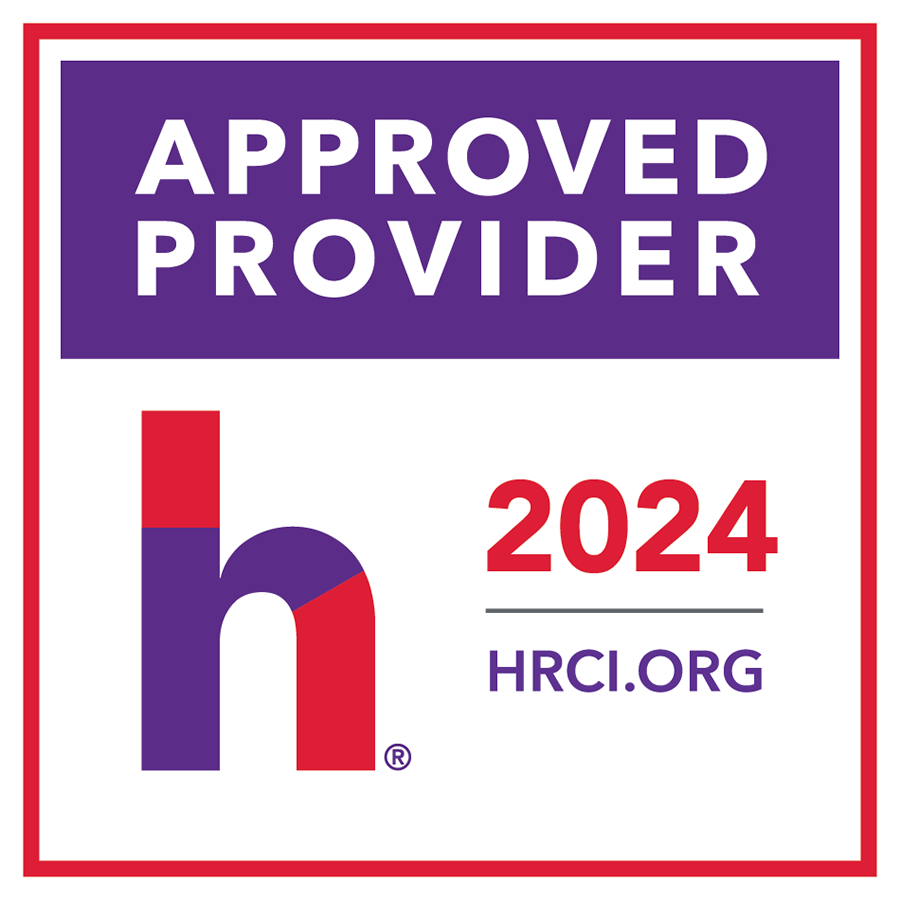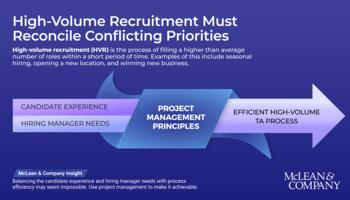- Talent acquisition (TA) functions face many demands and competing priorities. TA needs to not only fill roles quickly but also fill them with the right talent. Managing current demands while planning for future talent needs means TA is simultaneously fighting fires and trying to prevent new ones.
- TA’s attempts to manage these competing pressures often focus on improving TA processes. Although process is a key element of TA, a more holistic examination is required to identify and close strategic gaps that are preventing a stronger contribution to organizational success.
Need Extra Help?
Speak With An Analyst.
- Get on-demand project support
- Get advice, coaching, and insight at key project milestones
- Go through a Guided Implementation to help you get through your project

Our Advice
Critical Insight
- A TA strategy has the greatest impact on organizational success when it optimizes foundational TA elements to deliver on current and future talent needs.
Impact and Result
- Use a defined framework to create a TA strategy that identifies TA strategic objectives and the projects needed to support and drive the organization’s priorities. Holistically assess and optimize the foundational strategic elements of TA – candidate awareness & experience, TA process & accountability, TA technology, and TA competency – to elevate TA as a strategic function.

Talent Acquisition Strategy

This program has been approved for continuing professional development (CPD) hours under Section A of the Continuing Professional Development (CPD) Log of the Human Resource Professionals Association (HRPA).

McLean & Company is recognized by SHRM and can award Professional Development Credits (PDCs) for the SHRM-CP® or SHRM-SCP®.

HR Certification Institute's® (HRCI®) official seal confirms that McLean & Company meets the criteria for pre-approved recertification credit(s) for any of HRCI’s eight credentials, including SPHR® and PHR®.
How to complete this course:
Use these videos, along with the Project Blueprint deck above, to gain an understanding of the subject. Start with the Introduction, then move through each of the Course Modules. At the end of each Module, you will be required to complete a short test to demonstrate your understanding. You will complete this course when you have completed all of the course tests.
- Number of Course Modules: 5
- Estimated Completion Time: 1.5 hours
Learning Outcome
Create a talent acquisition (TA) strategy that optimizes foundational elements and supports the organization’s talent needs.
Learning Objectives
By the end of this course, learners will be able to:
- Identify how implementing a TA strategy can benefit your organization.
- Recognize how to optimize the four TA foundational elements.
- Learn the steps involved in creating a TA strategy.
- Discover how a TA strategy supports the organization’s priorities.
All of our McLean Academy courses have closed captioning available. To turn this function on, click on the C.C. in the bottom right corner of the video screen and click "English" on the options that pop-up.
Course Modules

Create a Talent Acquisition Strategy - Intro: Optimize foundational elements to elevate the TA team

Create a Talent Acquisition Strategy - Module 1: Determine TA strategic objectives and define metrics

Create a Talent Acquisition Strategy - Module 2: Review candidate awareness & experience and TA process & accountability

Create a Talent Acquisition Strategy - Module 3: Review TA technology and TA competency

Create a Talent Acquisition Strategy - Module 4: Select strategic projects and implement the TA strategy
Workshop: Create a Talent Acquisition Strategy
Workshops offer an easy way to accelerate your project. If you are unable to do the project yourself, and a Guided Implementation isn't enough, we offer low-cost delivery of our project workshops. We take you through every phase of your project and ensure that you have a roadmap in place to complete your project successfully.
Module 1: Determine Strategic Objectives
The Purpose
Determine talent implications and create strategic directional statements.
Key Benefits Achieved
The talent implications and strategic direction of the TA strategy determined
Activities
Outputs
Review information gathered from strategic documents and external labor market scan.
Determine talent implications.
- Talent implications relevant to TA
Identify and prioritize talent implications relevant to TA.
Create strategic directional statements associated with talent implications.
- TA strategic directional statements
Module 2: Conduct Gap Analysis of TA Foundational Elements
The Purpose
Review candidate experience and identify gaps in current state.
Key Benefits Achieved
Candidate awareness and experience reviewed and foundational TA element gaps identified
Activities
Outputs
Review candidate awareness and experience data gathered.
Identify gaps by assessing the current state for candidate awareness and experience and TA process and accountability.
- TA foundational element gaps identified
Module 3: Prioritize Gaps to Address
The Purpose
Identify and prioritize TA gaps to address.
Key Benefits Achieved
- TA foundational elements gaps prioritized based on size and importance to focus resources
- Defined strategic projects to address gaps
Activities
Outputs
Identify gaps by assessing the current state for TA technology.
- Identified and prioritized TA foundational element gaps
Prioritize gaps based on size and importance.
Determine potential strategic projects and initiatives to address gaps.
- Strategic projects defined
Module 4: Select Strategic Projects
The Purpose
Select and create a roadmap for strategic projects.
Key Benefits Achieved
- Strategic projects are assigned owners and roadmaps are created
- The communications for the TA strategy are outlined for the relevant stakeholders
Activities
Outputs
Identify gaps by assessing the current state for TA competency.
Review strategic projects and assign project owners.
- Owners assigned strategic projects
Draft a roadmap.
- Roadmap of strategic projects
Outline communications to relevant stakeholders.
- Communication to stakeholders outlined
- Completed draft of TA Strategy Presentation Template
 Create a Talent Acquisition Strategy
Create a Talent Acquisition Strategy
 Increase the Efficiency of the Talent Acquisition Process
Increase the Efficiency of the Talent Acquisition Process
 Redesign the Candidate Experience
Redesign the Candidate Experience
 Streamline the Internal Hiring Process
Streamline the Internal Hiring Process
 Plan for High-Volume Recruiting
Plan for High-Volume Recruiting
 Determine the Right Recruitment Process Outsourcing Solution
Determine the Right Recruitment Process Outsourcing Solution
 Redesign the Talent Acquisition Structure
Redesign the Talent Acquisition Structure